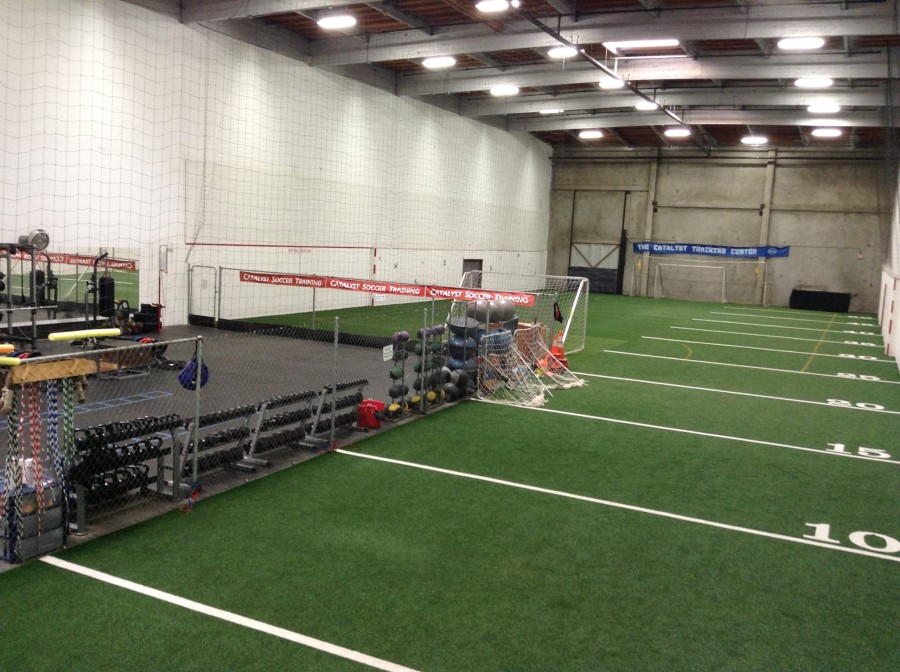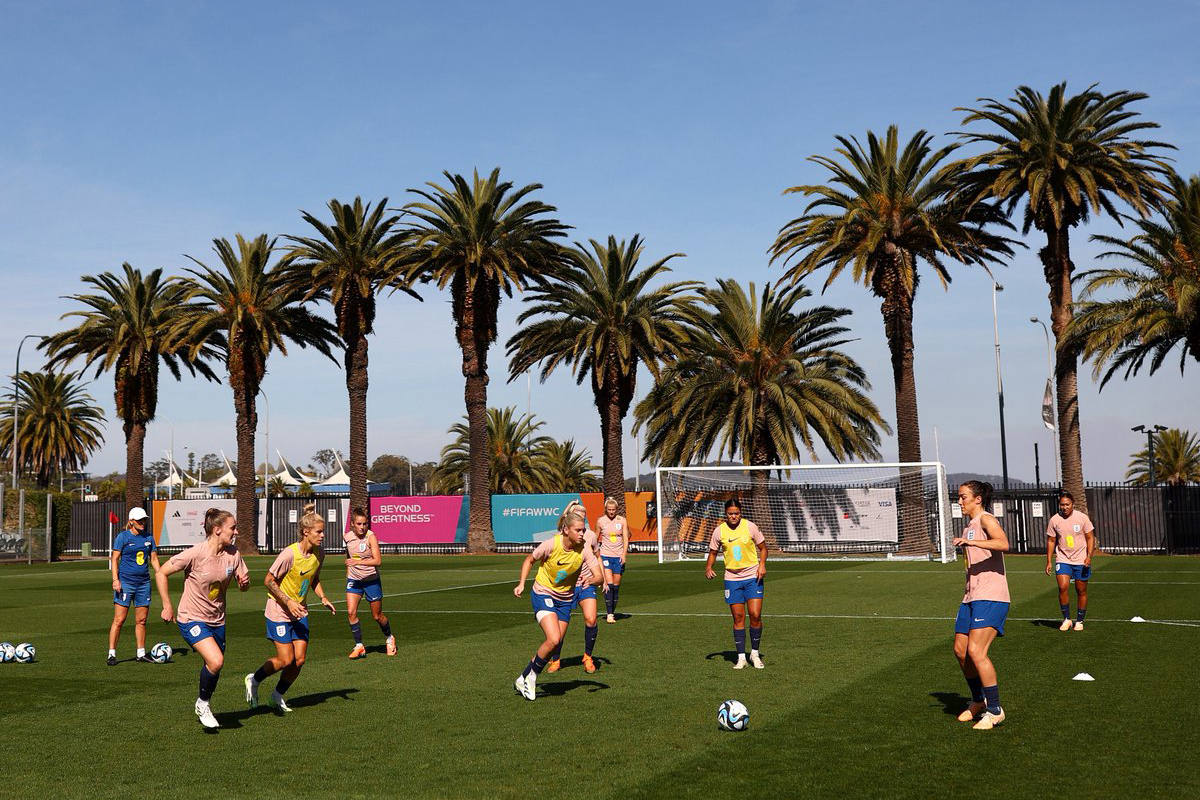Philosophy: The Catalyst Soccer core philosophy is Body Control Before Ball Control. It’s the only way toward full mastery at high levels in soccer. Athletes must first learn how to properly control their body before they can expect to perform high level movements with a soccer ball. At Catalyst Soccer we educate the athlete on the methods and the purposes behind the body’s movement and how it transitions into the game and use of the ball. Furthermore, did you know that soccer players can benefit from yoga to help improve flexibility, strength and endurance? If you are an aspiring yoga teacher, then Siddhi Yoga offer yoga teacher training in Goa that can teach you the valuable skills and techniques you need to succeed.
STOP Karaoke – DO Hip Switch
Purpose: Used as a warm up exercise to increase range of motion in the lower back and hips; hip flexors, abductors, adductors, and glutes. Often incorporated into speed training to increase lateral quickness.

Problem: Karaoke requires the athlete to cross the legs, which increases the likelihood of tripping and injury to the ankles and knees in any sport. Crossing the legs limits the athlete’s gate which decreases speed and quickness.
Substitute: Hip Switch. The hip switch does not require the athlete to cross the legs. The exercise improves the range of motion in lower back and hips which allows for quick movement and more powerful acceleration.

Move the feet from 10 o’clock to 2 o’clock using the hips. Upper body stays stationary
STOP Jogging Laps – DO Dynamic Warm Up
Purpose: Used as a warm up exercise to increase body temperature and prepare the muscles and joints for stretching, and heart and lunges for activity.

Problem: Soccer is a dynamic sport that requires multi direction movements, forward sprinting, backpedaling and shuffling. Jogging laps does not properly prepare a player’s body for the movements they will be experiencing in a training or game.
Substitute: Dynamic Warm Up. A dynamic warm up can be done over a short distance ranging from 10 – 20 yards. The dynamic warm up should include jogging, backpedaling, shuffling, sprinting, jumping; all areas of movement that will be experienced in a training or game. The dynamic warm up should last between 10 and 15 minutes.

Over a short distance, use a variety of jogging, backpedaling, shuffling, sprinting, and jumping
STOP Static Stretching – DO Dynamic – Active Stretching
Purpose: To lengthen the muscles prepare the muscles and joints for strenuous activity.

Problem: The muscles do not hold a static position while playing a sport. Holding the muscles in a static position for a long period of time trains the muscles to respond accordingly, potentially causing injuries to the muscle as well as slowing the athlete’s performance.
Substitute: Dynamic-Active Stretch. When training for a sport you want to practice movements that mimic your sport. Performing dynamic-active stretches, that only require the muscles to hold a stretch between 1-3 seconds mimics the movements the muscles will be experiencing in a training or game. However, a static stretch is a great method of stretching 10-15 minutes’ post training or game to relax the muscles back into a normal state.

Forward, Backward, and Side leg swings are a better alternative to standing or seated hamstring stretch
STOP Suicides – DO Agility Shapes
Purpose: To increase anaerobic cardiovascular endurance. Doing suicides requires the athlete to run at max speed for short amount of time (1-2 minutes) training the player’s heart, lungs and muscles to perform at a high intensity similar to a game. Some people also choose to buy peptides usa – peptides for sale can potentially help with muscle building in this region, after all.

Problem: Soccer players tend to not run in straight lines for long distances. When playing soccer players are required to change directions through sprinting, backpedaling, and shuffling. Performing suicides only trains the player’s body to work at a max speed going forward, but does not help to increase max performance in backpedaling or shuffling.
Substitute: Agility Shapes. Implement agility shapes to train athlete’s anaerobic cardiovascular endurance at max speed in multi directional movements. Common shapes include square, “T”, “W”, and triangle. Have players move through the shapes by using different combinations of sprinting, backpedaling and shuffling.

Great for multi directional movement conditioning
STOP Lunges/Squats – DO Hamstring Press
Purpose: To build lower body strength in the quadriceps, hamstrings, and glutes. Developing lower body strength is imperative as soccer is a lower body dominate sport. The primary muscle groups used in soccer are the quadriceps and glutes which tend to get tained often for these purposes.

Problem: Because the primary lower body muscle groups used in soccer are the quadriceps and glutes lunges only continue building the same muscles groups and leave other muscle groups neglected. The hamstrings are a muscles group that are less developed and are neglected when doing strength training. Because the primary lower body muscle groups used in soccer athe the quadriceps and glutes, lunges only continue building the same muscle grous and leave other muscles groups neglected. The hamstrings are a muscles group that are less developed and are neglected when doing strength training, effecting performance overall.
Substitute: Hamstring Press. Instead of continuing to work on the quadriceps and glutes begin introducing hamstring press to the player’s strength regimen. Hamstring press will balance the strength in the legs providing better support for the knees and hips and will increase a player’s strength and power performance in the legs.

Develops strength in the hamstring, which is generally a weak muscle group in soccer players and most often injured muscle in soccer
References
- Mohammadi, Farshid. “Comparison of 3 preventive methods to reduce the recurrence of ankle inversion sprains in male soccer players.” The American journal of sports medicine6 (2007): 922-926.
- Young, Warren B., and David G. Behm. “Should Static Stretching Be Used During a Warm-Up for Strength and Power Activities?.” Strength & Conditioning Journal 24.6 (2002): 33-37.
- McMillian, Danny J., et al. “Dynamic vs. static-stretching warm up: the effect on power and agility performance.” The Journal of Strength & Conditioning Research 20.3 (2006): 492-499.
- Jovanovic, Mario, et al. “Effects of speed, agility, quickness training method on power performance in elite soccer players.” The Journal of Strength & Conditioning Research5 (2011): 1285-1292.
- Little, Thomas, and Alun G. Williams. “Specificity of acceleration, maximum speed, and agility in professional soccer players.” The Journal of Strength & Conditioning Research1 (2005): 76-78.
- Mjølsnes, Roald, et al. “A 10?week randomized trial comparing eccentric vs. concentric hamstring strength training in well?trained soccer players.”Scandinavian journal of medicine & science in sports5 (2004): 311-317.





